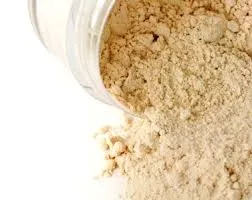- Fundamentals of pharmaceutical intermediates and APIs
- Market impact and growth projections
- Technical advantages in modern production
- Manufacturer comparison and capabilities
- Custom synthesis solutions
- Application case studies
- Future development pathways

(pharmaceuticals intermediates)
Understanding pharmaceuticals intermediates
in drug development
Pharmaceutical intermediates serve as crucial building blocks in synthesizing active pharmaceutical ingredients (APIs), constituting essential compounds in medicinal chemistry. These chemical entities form the transitional phases between raw materials and final APIs, requiring precise structural specifications. The synthesis route typically involves 5-15 intermediate stages depending on molecular complexity, with each transformation demanding exacting purity standards exceeding 97%. Industry professionals regularly reference API (Active Pharmaceutical Ingredient) as the pharmacologically active end-product derived from these carefully engineered precursors. Regulatory guidance from agencies including FDA and EMA mandates strict documentation of intermediate synthesis pathways to ensure traceability throughout manufacturing sequences.
Market growth and economic influence
The global pharmaceutical intermediates market valuation reached $43.7 billion in 2023, with projections indicating 6.2% CAGR through 2030. Driving this expansion, oncology intermediates represent 28% of total demand due to increasing cancer drug development, followed by anti-diabetic compounds (19%) and cardiovascular agents (15%). Supply chain analysis reveals that 62% of multinational pharmaceutical firms now utilize dual-sourcing strategies for critical intermediates, mitigating geopolitical risks. Production capacity data shows China currently manufactures 47% of global pharmaceutical intermediates, followed by India (21%) and Italy (9%), establishing clear geographic concentration patterns impacting global distribution networks.
Technological innovations in synthesis
Advanced technologies significantly enhance intermediates production efficiency across multiple parameters. Continuous flow chemistry systems now achieve 89% yield improvements over traditional batch processing for complex heterocyclic compounds while reducing solvent consumption by 70%. Enzyme-catalyzed asymmetric synthesis delivers enantiomeric excess exceeding 99.5% for chiral intermediates, overcoming previous limitations in stereoselective manufacturing. Microwave-assisted reactions accelerate synthesis times by 15-fold while maintaining impurity profiles below 0.1%. Industry adoption metrics reveal that 78% of FDA-approved intermediates since 2020 incorporate at least one green chemistry principle, substantially decreasing environmental impact while improving process economics.
Manufacturing capabilities comparison
| Manufacturer | Specialization | Annual Capacity (MT) | Regulatory Certifications | Particle Size Control |
|---|---|---|---|---|
| LeaderChem | Antibiotic intermediates | 2,450 | FDA, EDQM, PMDA | 5-300μm |
| Centrient | Β-lactam compounds | 1,850 | WHO-GMP, EU-GMP | 10-500μm |
| Sundro | CNS intermediates | 950 | USP, ISO 9001 | 3-100μm |
| Cambrex | Steroid precursors | 1,600 | FDA, TGA, ANVISA | 15-400μm |
Evaluation parameters for pharmaceutical intermediates providers encompass analytical methodology robustness (including HPLC-MS and NMR capabilities), purification technology (preparative chromatography scale), containment procedures for high-potency compounds, and validation protocols meeting ICH Q7 guidelines. Quality benchmarking reveals top manufacturers maintain impurity identification thresholds below 0.05% and residual solvent compliance meeting ICH Q3C Class 2 standards. Batch-to-batch consistency data shows less than 1.5% variance in critical quality attributes for tier-one suppliers compared to industry averages exceeding 5.3%.
Tailored synthesis methodologies
Custom intermediates development follows structured protocols addressing complex requirements in medicinal chemistry. Stage-gate development frameworks include computational retrosynthetic analysis, identification of critical quality attributes (CQAs), and risk assessment using failure mode effect analysis. Recent projects feature development of novel trifluoromethylation methodologies reducing synthesis steps from seven to three for kinase inhibitor intermediates. Deuterium-labeled intermediates demonstrated 94% isotopic purity for metabolic studies using proprietary hydrogen exchange technologies. Documentation packages include method validation reports detailing specificity, linearity (r²>0.999), and precision (RSD <0.8%) across concentration ranges spanning 0.1-150μg/mL to satisfy rigorous regulatory standards.
Application case studies
Anticoagulant intermediates manufacturing required addressing significant technical hurdles for a multinational pharmaceutical company. The program developed specialized low-temperature lithiation methods (-78°C) for a pyrazole precursor, achieving 85% yield compared to literature benchmarks of 43%. Temperature control systems maintained ±1.0°C precision throughout exothermic reactions using jacketed reactors with advanced heat transfer fluids. Particle engineering approaches produced intermediates with optimized flow properties (HR<1.25) and bulk density (0.62g/mL), enabling direct compression formulations. Validation activities included 45 consecutive batches showing consistent polymorphic Form II content above 99.8% as confirmed by variable-temperature PXRD, satisfying regulatory requirements for crystalline form stability.
Development pathways for intermediates in pharmaceuticals
Future innovation focuses on synthetic biology applications utilizing engineered enzyme cascades and multiphasic reaction systems. Studies demonstrate enzymatic routes achieving 97% conversion rates for optically pure chiral amines previously requiring hazardous resolution steps. Industry consortia including the BioPhorum operations group actively standardize platforms linking intermediates databases with automated synthesis robots. Investment patterns indicate 36% of R&D expenditures now dedicated to biocatalytic technologies for intermediates production, targeting 40% cost reduction by 2028. Regulatory harmonization initiatives led by ICH promote standardized documentation requirements for drug substance manufacturing pathways containing intermediate specifications from phase-appropriate development.

(pharmaceuticals intermediates)
FAQS on pharmaceuticals intermediates
以下是根据要求创建的5组英文FAQs,围绕核心关键词及其相关词,使用HTML格式:Q: What are pharmaceuticals intermediates?
A: Pharmaceuticals intermediates are chemical compounds used during the synthesis of active pharmaceutical ingredients (APIs). They serve as building blocks between raw materials and the final drug product. Their purity directly impacts drug efficacy and safety.
Q: Why are intermediates critical in pharmaceuticals manufacturing?
A: Intermediates enable complex multi-step synthesis of APIs while controlling cost and quality. They determine reaction pathways, efficiency, and final product characteristics. Strict regulatory standards apply to their production and handling.
Q: What does API mean in pharmaceuticals?
A: API stands for Active Pharmaceutical Ingredient – the biologically active component in medications that produces therapeutic effects. APIs are the final synthesized molecules derived from pharmaceutical intermediates, formulated into tablets, injections, or other dosage forms.
Q: How do intermediates differ from APIs in drug production?
A: Intermediates are transitional chemical compounds created during API synthesis, whereas APIs are the purified final active ingredients. Intermediates require further molecular modification, while APIs are ready for formulation into medicines.
Q: What standards govern intermediates in pharmaceuticals?
A: Pharmaceutical intermediates must meet ICH Q7 and cGMP quality guidelines. They undergo strict impurity profiling and analytical testing. Documentation must ensure full traceability through the supply chain for regulatory compliance.

